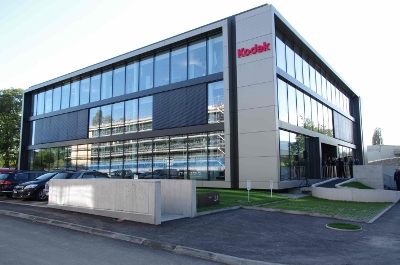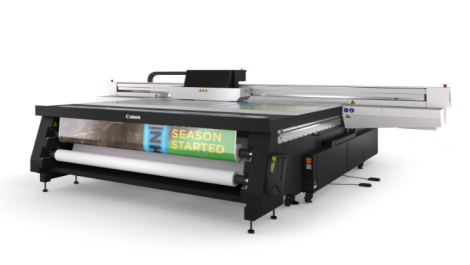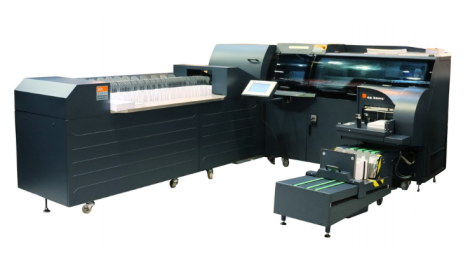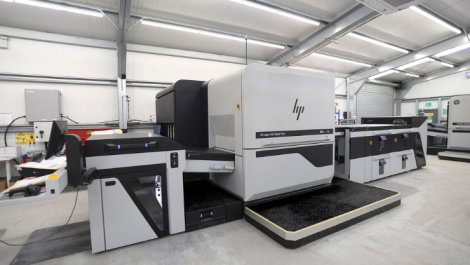The new Kodak Eysins technology centre near Geneva, Switzerland.
It would be an understatement to say that recent years for Kodak have been interesting. It has survived though and, as Andy Knaggs hears, has emerged from its Chapter 11 bankruptcy with renewed vision.
The third day of September 2013 was when the new Kodak emerged – a different Kodak; one that in the words of Antonio M. Perez, its chairman and chief executive officer, is ‘a technology company serving imaging for business markets – including packaging, functional printing, graphic communications and professional services’.
It has been a long and tough road to this point for the company, which entered Chapter 11 bankruptcy protection in January 2012. Its restructuring process has seen the sale of its Document Imaging and Personalised Imaging businesses – the consumer film and photographic business that made its name – to Kodak Pension Plan, a long-standing pension plan of Kodak’s UK subsidiary, thereby settling a $2.8 billion pension claim against the company.
The new Kodak is a much smaller entity, having entered Chapter 11 with around 17,000 employees, and emerging with around 8500. It is important to note, according to Kodak’s director and vice president of marketing Chris Payne, that Wall Street has backed the new Kodak with hard cash.
The company raised $695 million (around £447 million) in exit financing, while receiving approximately $406 million of new equity investments.
‘The Wall Street investors looked at the business in a lot of detail and decided this was a good place to invest,’ Mr Payne told Digital Printer. ‘This speaks well of the technologies that we have, and of not just Kodak but of this market place in general.’
He also speaks warmly of the customers that have stayed with Kodak through its trials, saying that their loyalty has been ‘the most amazing thing in the last two years’.
The limitations on how Kodak could operate during the period of Chapter 11 have been released. It can now talk more freely about where it is going as a business, and it can be more creative with how it services its customers’ needs. Mr Payne acknowledges the importance simply of changing the perception of the company that came with its Chapter 11 status.
‘This is the biggest single change. Customers understand that we’ve got a future and financial backing. They can now have confidence to invest. Many customers stayed with us but they were hesitant to make investment decisions.
Now they can see where we are going, that we have got the funding, and that we can help them. That takes away any of those clouds and that’s a huge change.’
Clearly there have been casualties and naturally Kodak wants to look forward; but are people still angry?
‘In this process (Chapter 11) there are different people with different views for sure, but at the end of the day the process is geared around making sure there’s a company that will survive,’ Mr Payne replied. ‘If we did not go through that process there just would not be a company. There’s value in the company that’s emerging from Chapter 11 and this process made sure. The majority of the people are better off that the business has survived, though not everyone.’
What of the future of Kodak then?
The Nexpress platform remains a key part of its portfolio, he said, especially for premium quality output. There will be further development – ‘new colours, new software, maybe faster speed’ – although the technology is quite mature.
‘We see it as key in our portfolio because it has a substrate range and colour quality that, at least in the short term, inkjet will not be able to get to,’ Mr Payne added.
Inkjet is a big part of Kodak’s present and future though, and the quest will continue for its Stream technology and the Prosper press that carries these heads to be able to apply inkjet at a price, quality and productivity comparable to offset; it will also go wider with a 60-inch Stream bar in development.
The SquareSpot laser imaging technology that Kodak has built its CTP platesetters around will reach its potential in use for ‘functional’ printing applications – areas such as electronics, smart packaging, and bio-sensors. This is a new direction for the company, and it will begin with touch screen sensors which can be printed comparatively cost effectively using SquareSpot.
Kodak is a business that has had to transform itself – something that many of its customers also face while print finds what Mr Payne calls its ‘logical place as a value add medium’. It now wants to focus on helping customers make that change.
He concluded: ‘We have chosen this market place, imaging for business, as a clear area where we have solutions for our customers and can help them grow. The industry should feel comfortable with the transformation we are going through and that we will be here for a long time.’





